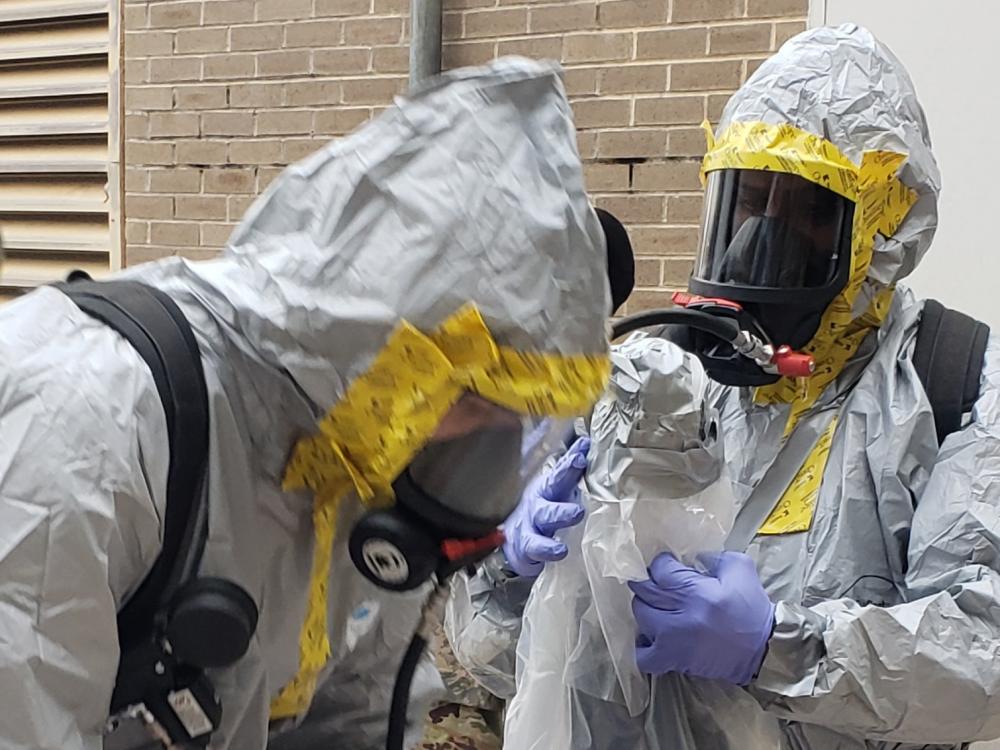20/08/2022 Stati Uniti, Maryland, Harford, Aberdeen Proving Ground
“If you ever come across anything suspicious like this item, please do not pick it up, contact your local law enforcement agency for assistance”
Story by Walter Ham–20th CBRNE Command
U.S. Army civilian ordnance disposal experts take on Unexploded Ordnance (UXO) in support of military operations and civil authorities. UXO can be as lethal as when it was first produced – but it is no match for the U.S. Army civilians from the Chemical, Biological, Radiological, Nuclear, Explosives (CBRNE) Analytical and Remediation Activity, also known as CARA. Army civilian Explosive Safety Specialists (Explosive Ordnance Disposal) from CARA deploy across the nation and around the world. From Panama and Hawaii to New Jersey and California, Army civilian UXO technicians locate, conduct non-intrusive analysis and properly safeguard chemical and explosive UXO munitions. Kerry M. Jones, a U.S. Army civilian program manager for CARA Remediation and Response-East and an ordnance removal manager at the CARA Headquarters on Aberdeen Proving Ground’s Edgewood Area, said Army ESS (EOD) technicians support many different kinds of UXO missions, including research and development of CBRNE technologies. “ESS (EOD) personnel are engaged in various operations ranging from supporting installation infrastructure projects, emergency responses to suspected chemical munitions, non-intrusive assessment of munitions and remediation of chemical sites,” said Jones, a retired U.S. Army Ordnance Corps and EOD senior enlisted Soldier from Chicago. “Their day-to-day activities are not standardized but are fluid to respond to what is happening that particular day,” said Jones. “Their jobs are critical to keeping the environment and general population safe from chemical and explosive hazards.” Jones said that all CARA’s ESS (EOD) personnel are former U.S. military EOD technicians. According to Jones, who served in the U.S. Army’s Technical Escort Unit, ESS (EOD) personnel leverage their experience to safely conduct reconnaissance of UXOs to ensure the correct identification, classification and handling of UXOs. “I have responded to basically all types of munitions, including bombs, rockets and hand grenades, in my career,” said Jones. “In terms of my most rewarding UXO response, they have all been rewarding because with each response you learn something new and always get the satisfaction of removing a hazard from the environment.” An all-Army civilian organization, CARA is part of the 20th CBRNE Command, the U.S. military’s premier all hazards formation. The 20th CBRNE Command is also home to 75 percent of the Active Duty Army’s Explosive Ordnance Disposal technicians and Chemical, Biological, Radiological, Nuclear (CBRN) specialists, as well as the 1st Area Medical Laboratory, five Weapons of Mass Destruction Coordination Teams and three Nuclear Disablement Teams. Soldiers and U.S. Army civilians from 20th CBRNE Command deploy from 19 bases in 16 states to confront and defeat the world’s most dangerous hazards in support of joint, interagency and allied operations. In addition to assessing, packaging and transporting chemical UXOs, CARA conducts mobile laboratory operations, emergency response missions for Recovered Chemical Warfare Material and technical escort of surety and non-surety chemical material. Franz J. Amann, the director of CARA, said Army civilian ESS (EOD) play a crucial role in remediating formerly used defense sites and training ranges of explosive hazards so that the facilities can be reused. The CARA director added that ESS (EOD) civilians support CARA’s remediation activities around the nation and deploy for overseas military operations. “Our Army civilian ESS (EOD) bring a wealth of experience to the many important missions that CARA accomplishes every day,” said Amann, a retired U.S. Army Chemical Corps officer from Spartanburg, South Carolina. “Their day-to-day remediation operations in working in a hazardous and potentially chemical environment ensures the Army maintains highly trained and experienced civilian teams that are prepared to deploy to similar environments for contingency operations. In addition, the important work they do every day helps to keep our service members and the American public safe.” CARA routinely has open job announcements for ESS (EOD) technicians. The announcements can be found on USAJobs.gov by searching APG. Grades can vary between GS-11 to GS-13 depending on the individual’s experience and level of training.
If you find anything that appears to be an explosive device, do not touch it, leave it where it is and call the police. We will contact the appropriate agencies to properly dispose of the item.
Dear editors, Biography of a bomb is aimed at highlighting the danger caused by unexploded bombs. Moreover, the most important aspect is that we work completely non profit, raising awerness about this topic is what drives us. We apologize if we make use of pictures in yours articles, but we need them to put a context in how findings are done. We will (and we always do) cite source and author of the picture. We thank you for your comprehension





